Cerritos College SUR:biennial 2015
SUR:Biennial > 2015 > Cerritos
Exhibition Installation. Various Artists, Cerritos College Art Gallery, 2015.
THE FUTURE IS NOW/HERE
Speculative Temporalities at the Intersection of Art and Technology
James MacDevitt
Despite obvious evidence of a vaster and much more diverse history of artistic production,
it is still quite
likely the case that, at least for some, broad terms like ‘Latino Art’ or ‘Chicano
Art’ are bound to elicit thoughts
only of bright, colorful painted murals (probably of them Social Realist or Street
Art varietals) and the well-worn iconic imagery of early 20th century Indigenismo
or late 20th century neo-Mexicanism. It is perhaps because of
these over-generalized assumptions that the curators of the SUR:biennial have always
worked hard to resist and avoid those particular associations in their selections
for biennial participants, instead choosing to highlight the profound diversity of
creative output by local contemporary artists that still continue to exist and develop
at the numerous intersections between Los Angeles and the broader global South.
For my own part, I was primarily interested during this specific biennial cycle in
bringing together a group of
diasporic and international Latino/a artists who overtly use industrial and/or computational
technologies
within their individual artistic practices, be it as aesthetic medium, conceptual
signifier, or mechanism
for interactivity. Despite naïve assumptions to the contrary, these ‘futuristic’ technologies,
their creative potentiality, and their utopian (and/or dystopian) cultural associations
are not teleological shifts away
from a more authentic, albeit entrenched, cultural tradition, nor are they simply
a superficial supplement
to it.
In point of fact, art and technology have always intersected within the various cultural
movements of
Latin American and Latino modernism(s). Certainly this phenomenon is evident in the
sci-fi-tinged tendencies
that coalesce around the recently-popularized term Latin@Futurism1, including in the speculative fictions
of Ernest Hogan’s Cortez on Jupiter and Sesshu Foster’s Atomik Aztex, in the performative
Cyber-Vato and El
Mexterminator characters of Guillermo Gomez-Peña, and in the autonomous post-human
robotics of Chico
McMurtrie. However, it also predates these recent examples from the last quarter century.
Technological
fetishism can be seen in the industrial utopianism of the Estridentista movement of
1920s Mexico (coeval,
in fact, with the more famous mural movement that typically overshadows it) and in
the fantastic geometric
neon abstractions of the constructivist-inspired Arte-Madi movement in 1940s Buenos
Aires (which boasts
some of the first artworks to incorporate this particular industrial material, and
which no doubt helped to
inspire the multi-mediated environments of later generations, most notably Marta Minujín’s
psychedelic
happening La Menesunda). It is also present in the mid-century Space-Age aspirations
of Lucio Fontana
and in Héctor Germán Oesterheld’s late-1950s postapocalyptic graphic novel El Eternauta.
With any luck,
these and other art historical connections between the numerous futurisms of Latin
American modernism
and contemporary Latin@Futurism will be explored, in much greater depth than I am
capable here, in the
upcoming Getty-funded PST:LA/LA exhibition at the UCR/ARTS block entitled Mundos Alternos:
Art and
Science Fiction in the Americas.2
What does seem to set the six projects included in the 3rd SUR:biennial at Cerritos
College apart from
the predecessors mentioned above, however, is their assertive move beyond just formal,
material, or
semiotic explorations of industrial and technological tropes. Instead, they incorporate
high-tech iconography
and computational interactivity primarily as a means to an end; in particular, to
allow for participation
in larger discourses on the fleeting and migratory nature of identity in a globalized
and technologically saturated
world. As such, they tend to present not just overt gestures to a prescribed and collective
cultural vocabulary, but instead allude directly to the environmental, institutional,
and even philosophical frameworks that shape the construct of those specific subjectivities
within, and through, these very structures.
For example, the CUBO Collective, a transnational artmaking cooperative, with members
living both in Los
Angeles and Tijuana, resurrected for the SUR:biennial one of their previous works,
a deceptively simple,
but technically complex installation, Impediment. Collaborating while living on both
sides of the USMexico
border has made these artists particularly aware of the divergent experiences that
are produced
when diverse peoples encounter the physical barriers constructed to enunciate national
demarcations. Both
a wall that obstructs the visitor’s view of the rest of the exhibition and a protective
cocoon that (initially)
invites bodily entry, the unassuming hanging wooden slats of Impediment only reveal
their powerful hidden
interactivity once the visitor is funneled toward its entrance. Ambient sounds are
triggered by motion and
proximity and the deeper one goes into the installation, the more overwhelming and
disorienting these
sounds become. But not all pathways produce similar cacophonies. Walking erect through
the installation
triggers industrial sounds, such as car exhaust and beeping horns, similar to which
one might experience
if driving through the San Ysidro port of entry. However, getting closer to the ground,
and especially crawling
on one’s knees, triggers sounds of heavy breathing, distant shouting, glass breaking,
and dogs barking,
noises reminiscent of more illicit attempts to cross. The border is a literal impediment
for all, but the
nature of that impediment depends as much on one’s identification card as one’s identity.
Donald Trump may
lapse rhapsotic about a future border wall, but more terrifying than Trump’s reactionary
and isolationist wet
dream is the current layers of futuristic controls that already monitor and modulate
any traversal across
national boundaries. As Gilles Deleuze points out in his essay “Postscript on the Societies of Control,”“Enclosures are molds, distinct castings, but controlsare a modulation, like a self-deforming cast that willcontinuously change from one moment to the other,or like a sieve whose mesh will transmute from pointto point.”3 If anything, the most laughable aspect of Trump’s bigoted wall, as a gigantic molded
enclosure, is how backwardly ineffective it would be by comparison to the existing
biometric, optoelectronic, and drone surveillance already in use. Impediment operates
as a similar high-tech surveillant assemblage within the gallery space, combining
a network of proximity
sensors with a computational program that identifies patterns of movement and triggers
prearranged and
preapproved responses (in this case, and thankfully, just sounds).
A different kind of speculative exploration of border fences and nationalistic societies
of control can be seen in Alex Rivera’s phenomenal 2008 sci-fi film Sleep Dealers,
where technology, in a parodied extension of NAFTA-inspired neo-liberal economic policies,
is shown to further oppress migrant laborers under the guise of a supposedly-advantageous
connection to wider global markets. The dystopian urban aesthetic of that film, as
with so many other recent science fiction movies, likely owes much to the grimy neon
signage seen in Ridley Scott’s seminal 1982 film, Blade Runner. One can’t help but
think of the neon cityscapes depicted in Blade Runner, as well, when viewing Patrick
Marinstallation for the SUR:biennial, which combines a number of his neon-laced paintings
and ceramic
sculptures to form an all-enveloping vignette of contemporary life in the cosmopolitan
urban metropolis that is Los Angeles. Playful visual puns, such as a neon sign spelling
out ‘Carniceria’ (meat market) against a painted backdrop of a seedy nightclub, are
juxtaposed to paintings resembling stucco walls with metal windowgratings covered
in vegetation and wooden bins holding ceramic replicas of convenience store foodstuffs
like oranges, Cheetos, and Skittles. The overall effect is somewhat like transporting
a generic street from East Los Angeles into the space of the gallery. And, much like
Monterey Park, Boyle Heights, the San Gabriel Valley, as well as many other traditionally
Chicano and Latino- American regions of LA, most of which have also long served as
outposts of Japanese-, Chinese-, and Filipino-American cultures, there are splashes
of sinographic writing in Martinez’s installation that hint at the rich cosmopolitan
and international make-up of these parts of the city, complicating simplistic assumptions
about supposedly provincialized and culturally-isolated ethnic communities.
While Martinez’s installation adds nuance and complexity to depictions of contemporary
urban culture in Los Angeles, the teleological thinking and rhetorical short-hands
used to justify the centuriesold
(and yet still ongoing) colonization of indigenous cultures in the Americas, inevitably
associating indigenous peoples with tropes of cultural ‘primitivity,’ are largely
upended by Guillermo Bert’s contribution to the SUR:biennial, selections from his
Encoded Textiles series. These kinds of fallacious beliefs, which still pervade romanticized
notions of an isolated and idealized ‘noble savage,’ ignore the thoughtful and engaged
contributions to current global environmental discourse by contemporary indigenous
eco-activists, such as the recently-assassinated Honduran environmentalist Berta Cáceres,
as well as disregard the latest archeological evidence, which suggests that many ancient
indigenous cultures lived so completely out-of-touch with their environment that they
jumpstarted their own ecologically-based collapse (for many Mayan city-states, it
was through the self-aggrandizing
construction of lime-plaster-covered pyramids; it took a lot of wood to keep the fires
running hot enough to melt the limestone, ultimately leading to clear-cutting and
deforestation)4. As William Faulkner proposed not so long ago, “the past is never dead. It’s not even past.”5 So, too, it is with our understanding of ancient indigenous technology. Gary Urton
through his research at Harvard, speculates that the Andean textile recording devices,
known as Khipu/Quipu, may have been built around a hierarchical binary-based language
of codes, quite similar to contemporary computer programming. Playing on this revelation,
Bert partnered with local indigenous weavers to create hanging tapestries that incorporate
both indigenous design patterns and fully-operational QR codes that can
be scanned by mobile devices to reveal text, audio, and video-based documents featuring
encoded indigenous
history and knowledge. In this way, an ancient Incan technology and a very contemporary
global technology
intersect, out of time. As such, the idealistic futurism of augmented reality and
the internet of things is shown
to be a much more antiquated aspiration than we might initially suspect.
Like Bert’s tapestries and CUBO’s wall-installation, there is another contribution to the SUR:biennial that hides more technological complexity and theoretical depth than might at first appear to be the case. Inspired by the philosophical implications of the short story, “The Writing of the God,” by Argentine essayist Jorge Luis Borges, Daniel Lara’s Fuerza Intellectual (Brain Power) initially appears to be a simple table with a familiar chessboard.6 But, like Borges’ writing itself, Lara’s installation reveals something much more profound on closer inspection. Underneath the chessboard are a grid of active sensors and a network of cables connected to programmable microcontrollers. combined with the artist’s own customized code, these Arduino and Rasberry Pi boards transform a simple game of chess into a physical manifestation of the philosophical conundrum originally explored in Borges’ story, namely the meaning(lessness) of life. As two players set about moving their pieces around the board, each move triggers random patterns of clicks from solenoid cells against a brick that hangs precariously above the table. Each move therefore threats to bring the brick collapsing down to disrupt the gameplay, highlighting the extreme precarity of meaning within this system. What is the point of playing if it could all end at any moment? One could say the same of life itself. According to Lara, however, his greatest thrill is watching the deep intellectual investment of the gaming combatants, who become so focused on their goal that they completely forget the proverbial sword of Damocles dangling literally over their heads. And that, perhaps, in the end, is the most revealing aspect of what it means to be alive, continuing to fight on in the face of ultimate precarity.
It is so easy to forget, when lost in the minutiae of personal struggles for success,
or even just for survival, that, largely, control over individual destiny is mostly
just an existential illusion. Beholden to internal psychological drives and larger
environmental forces, human beings remain animals. Rebeca Méndez’s contribution to
the SUR:biennial explores this link, both real and metaphorical, in even greater depth.
Her CircumSolar, Migration 3 records the migratory patterns of sea birds during their
breeding season. Traveling to Látrabjarg, the largest bird cliff in Europe located
at the western-most point of Iceland, Méndez undertook a visual study of the daily
dance of sea bird mating and consumption. She is fascinated by the fact that these
birds traverse the globe in large numbers following regular patterns of relocation
based solely on a search for abundant surpluses of food and aided only by magnetically-enhanced
navigational impulses developed over millennia of evolved biology. But she is equally
interested in the fact that human scientists and researchers schedule their own return
to these various locations based on this larger pattern of avian migration. And, while
she recognizes these crossspecies eco-cultural systems operate on the literal level
of the movements of birds, and scientists, and, yes, even an artist, she also understands
this genetic code for preservation and the migration it inspires to serve as an apt
metaphor for thinking about the similar patterns of migratory practices by human beings
as they traverse national, linguistic, and cultural territories, even in the face
of harsh geopolitical restraints. It should also be noted that the static camerawork
Méndez uses in her video installation is reminiscent of the unmanned field cameras
that scientists place in key locations to noninvasively record animal behavior, but
the 90 degree inversion of sea and sky in CircumSolar, Migration 3
defamiliarizes the scene and, when further combined with the droning minimalism of
Drew Schnurr’s musical
accompaniment, poetically invite the metaphorical contemplations discussed above.
If Méndez’s piece begs the viewer to contemplate identity politics at the temporal
scale of evolutionary imperatives, Beatriz Cortez’s installation The Cosmos invites
the viewer to freely participate in simultaneous temporalities. Originally presented
at CalArts, this multi-component installation was conceptually inspired by the paradoxical
demonstrations of modernist ingenuity and design that were exhibited alongside the
displays of the colonial ‘Other’ at the International Expositions and World Fairs
of the late 19th and early 20th centuries, as well as the dilapidated amusement parks
of the 1970s and 1980s that juxtaposed vintage and contemporary gaming machines. It
goes without saying that The Cosmos is a profoundly philosophical arcade. As a viewer/player,
you can enter a structure covered with funhouse-style mirrors, which, cracked and
bowed as they are, reflect your physical image in unexpected ways, alternately multiplying
or disappearing it. These fragmentary spatialized be(com)ings are further Whentinez’s
amplified by The Box of Untimely Conversations, a ‘fortune-telling’ machine covered
in shards of broken mirrors that spits out quotes about the future taken directly
from the writings of various philosophers,
including Spinoza, Nietzsche, Deleuze, Derrida, Butler, Braidotti, Barad, and Bolaño.
The collapsing of time and
space is again echoed in the kaleidoscopic projection on the wall, which, through
the use of a hidden webcam, fragments and reassembles the individuals present in the
viewing field into a jumble of bodies and interconnected subjectivities. Furthermore,
the cosmic imagery on the rehabilitated pinball machine (and the title of the installation
itself) asks the viewer to imagine themselves in the context of astrophysical timeframes,
whereby we are each of us only a briefly halted assemblage of molecules and atoms
that have existed for eons and will continue to attract and repulse one another though
endless series of fusion and fission, of bindings and unbindings, to eternity. As
one of Cortez’s favorite quotes from The Box of Untimely Conversations states (taken
directly from Donna Harroway’s influential essay “A Cyborg Manifesto”), “our best machines are made of sunshine.”7
ENDNOTES
1 Cathryn Josefina Merla-Watson and B. V. Olguín, “¡Latin@futurism Ahora! Recovering, Remapping, and Recentering the Chican@ and Latin@ Speculative Arts”, Aztlán: A Journal of Chicano Studies, 40:2 (Fall 2015): 135-146.
2 For more information, see http://artsblock.ucr.edu/Exhibition/mundos-alternos
3 Gilles Deleuze, “Postscript on the Societies of Control,”October, Vol. 59. (Winter 1992): pp. 3-7.
4 Dauna Coulter, “The Fall of the Maya: The Did It To Themselves,” Space@NASA, 6 October 2009 Web. 15 June
2016 <http://science.nasa.gov/science-news/science-atnasa/2009/06oct_maya/>
5 William Faulkner, Requiem for a Nun (New York: Vintage Classics, 2012).
6 Jorge Luis Borges, “The Writing of the God.” The Aleph and Other Stories (New York: Penguin Classics, 2004).
7 Donna Harroway, “A Cyborg Manifesto: Science, Technology, and Socialist-Feminism in the Late Twentieth
Century”, Simians, Cyborgs, and Women (New York: Routledge, 1991).
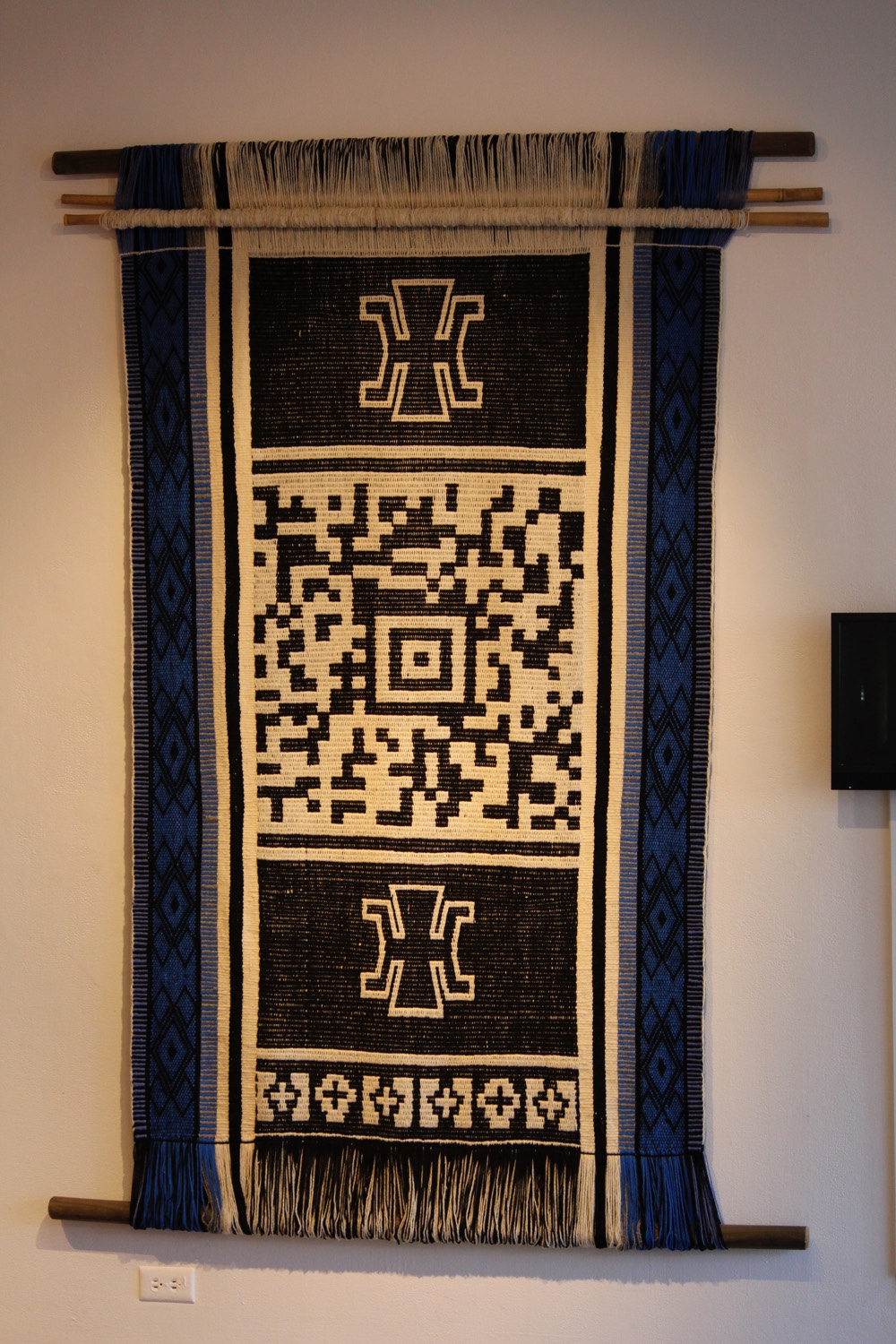
Guillermo Bert, Encoded Textile: Visionary, Wool & Natural Dye Encoded with Aztec
Bar-Code, 2012.
Guillermo Bert
Encoded Textiles, extends earlier motifs into works that engages a new generation of bar codes and Indigenous symbol systems through textile arts. He first noticed that QR codes, like those used to tag airport luggage, share remarkable similarities to the textiles of Mapuche peoples of his home country in Chile. From this observation, he began his multilayered project, collaborating to date with Mapuche, Navajo, and Zapotec weavers. In this techno society, identities are digitized and, in the process, may be stolen or lost - parallel, perhaps, to the identities lost by Indigenous peoples who become subsumed by the dominant society. This project intends to poetically reverse this process. The project is collaborative: between members of the communities, the artist, and the gallery visitor. By using a smartphone to "de-code" the design on the weaving, the viewer can visually enter into a digitized portal of Native American life.
LA-based artist Guillermo Bert was born in Santiago, Chile. He believes that being a bicultural artist living in Los Angeles provides him with a unique perspective from which his artistic expression is cultivated. Bert received a BA from the Catholic University in Santiago, Chile, and studied at Otis Parsons School of Design and Art Center College of Art and Design in Pasadena. He served as the Art Director for the Los Angeles Times and taught mixed media courses at Art Center. Bert has had solo exhibitions at the Lancaster Museum of Art and History, the Pasadena Museum of California Art, and the Museum of Latin American Art.
Close Up of Beatriz Cortez's The Cosmos (Pinball Machine) 2015.
Beatriz Cortez
The Cosmos evokes the colonial narratives, technological advances, and visions of Modernity that were put on display at international exhibitions in Europe and the United States during the early twentieth century. These exhibitions displayed colonial and imperial powers, but also imagined different worlds through installations such as the Moroccan mirror mazes, or the construction of a glass house. The Cosmos also evokes spaces such as arcades and amusement parks of the 1970s and 1980s, superimposing vintage and contemporary technologies to speak of our existence simultaneously lived between new and crumbling versions of Modernity, temporality, and colonialism. Furthermore, The Cosmos is informed by science fiction and is populated by quotes about the future directly taken from the writings of philosophers, thinkers, and literary authors such as Spinoza, Nietzsche, Deleuze, Guattari, Derrida, Clastres, Butler, Braidotti, Barad, Haraway, Dalton, Bolaño, and others. It is an installation informed by the past, by colonial, scientific, popular, and personal memories. However, it is also an installation about the future, about the idea that we are in constant motion, in a perpetual process of becoming other, in a process of becoming part of the cosmos.
Beatriz Cortez is an artist and a writer. Born in El Salvador, she has lived in the United States since 1989. Her work explores simultaneity, the existence within different temporalities and different versions of Modernity, particularly in relation to memory and loss in the aftermath of war, the experience of migration, and in exploration of possible futures. She has exhibited her work in Los Angeles, San Francisco, Washington, D.C., New York, El Salvador, Costa Rica, and Guatemala. She holds a Masters in Fine Arts from the California Institute of the Arts, and a doctorate in Latin American literature from Arizona State University. She teaches in the Department of Central American Studies at California State University, Northridge
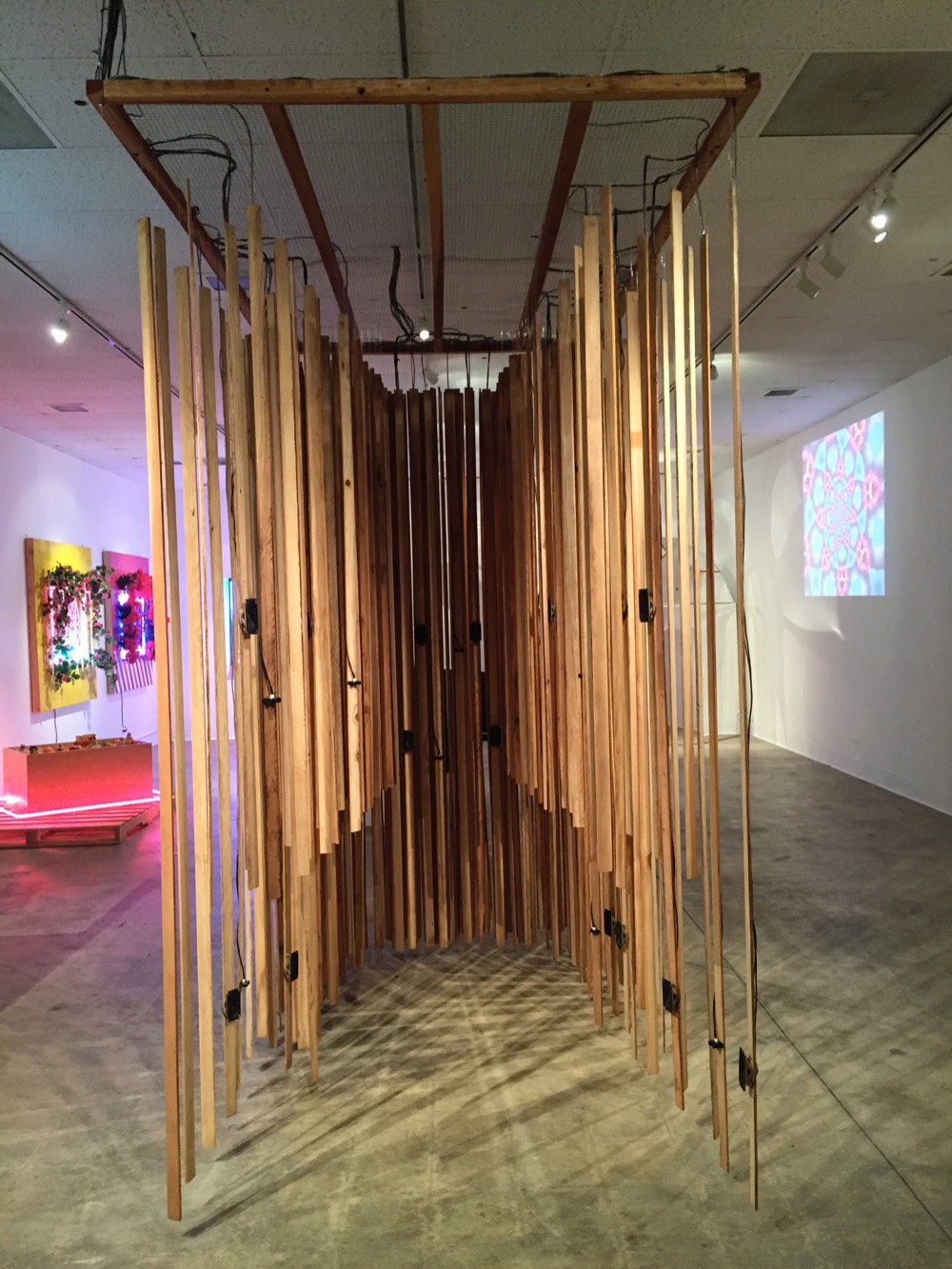
Cubo Collective, Impediment, Wood Slats, Proximity Sensors, Speakers, Custom Software
& Hardware, 2011.
Cubo Collective
Jennifer Donovan, Gabriela Torres Olivares, Nina Waisman, Flora Wiegmann, wtih PD
programing by Marius Schebella
Impediment is a collaborative and interactive sound installation exploring the choreographies of displacement and limitation in the state of citizenship: prerogative, dispossession, privileges or paucity, as well as the cultural and geopolitical motions provoked by the border between Mexico and the United States. In what ways does the border influence the bodily movements of those who cross it and those who cannot? Impediment is a collaborative, experimental sketch that explores the postures, gestures and experiences mapped and imprinted on our bodies by both built and virtual borders.
The CUBO project first began as an assemblage of pallets, a folding, unfolding, re-assembling, occasional cube, disturbed by sound and focused on issues in public culture. In various iterations, it gained urban mobility, interactivity, hosted radio waves and community-created sound content, lost all its materials, found new ones, lost them again. CUBO is in constant transformation. Nina Waisman produces mutli-media projects, exploring how technologically-driven forms of control and communication impact the body's space, time, and logic. She is particularly fascinated with the critical role that movement-based modes of thinking play in forming our thoughts - neurologists and cognitive scientists call such “physical thinking” the pre-conscious scaffolding for all human logic. She has exhibited in museums, galleries and public spaces nationally and internationally: venues include the California Biennial at OCMA, the Museum of Image and Sound in Sao Paulo, Brazil, the CECUT in Tijuana, the House of World Cultures in Berlin, the Zero1 Biennial and ISEA. She recently completed projects for LA><ART in Los Angeles, Casa Vecina in Mexico City, and The New Children's Museum in San Diego, where she has a climbable, interactive sound installation on exhibit through 2016. Gabriela Torres Olivares is a Mexican writer who works periodically with artists in interdisciplinary projects. She is the author of Enfermario (2010), Incompletario (2007) and Están Muertos (2004). Jenny Donovan is an interdisciplinary artist based in the Tijuana-San Diego border. Her work addresses the ontology of boundaries and liminal spaces through presence/absence phenomena. Her work has been exhibited at the Centro Cultural Tijuana, El Museo de Arte Carrillo Gil, and the San Diego Museum of Contemporary Art, among other spaces. Flora Wiegmann is a Los Angeles-based dancer and choreographer. She works in both live performance, installation, and film, and has had the opportunity to expand her practice through numerous collaborations with visual artists and musicians.
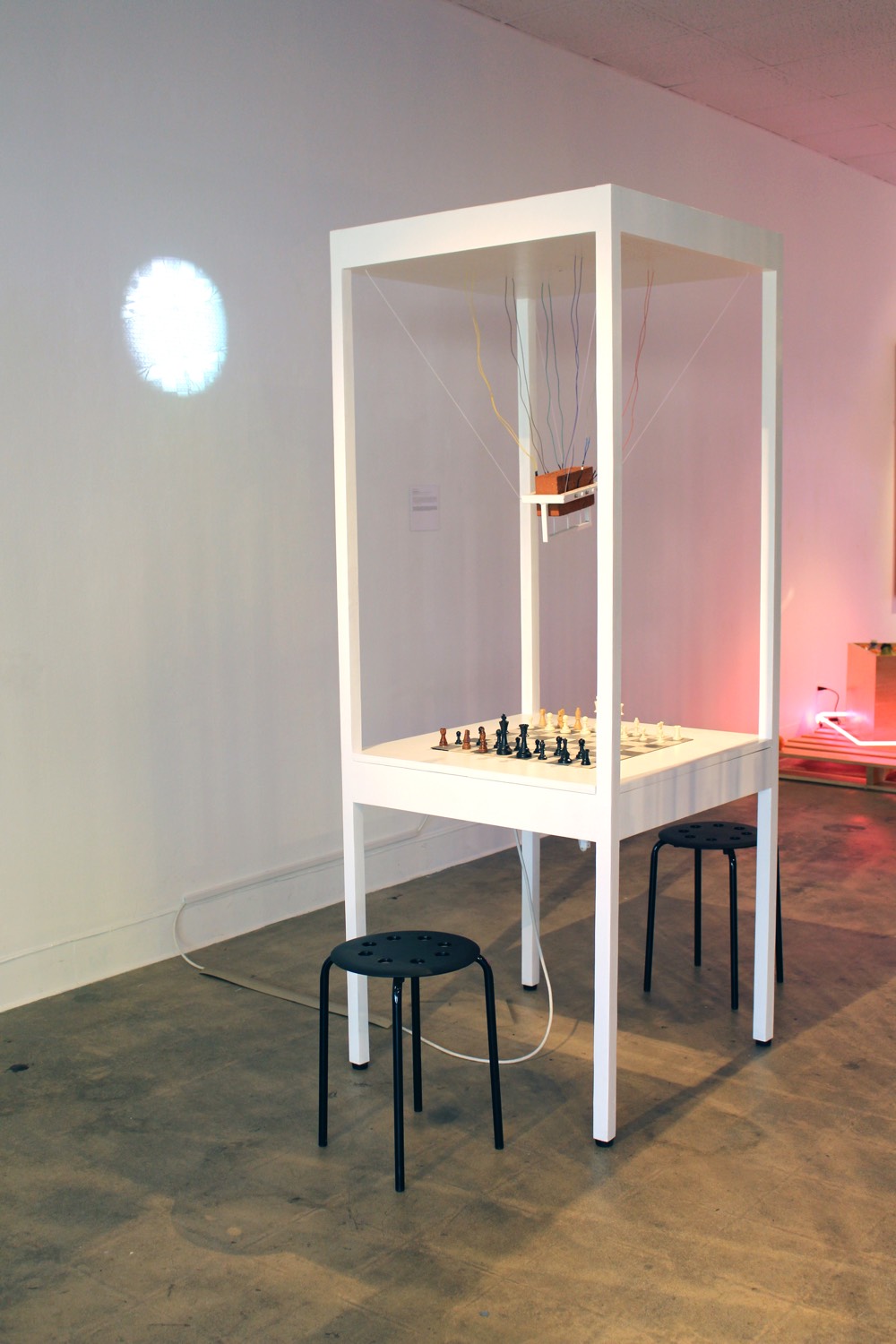
Daniel Lara, Fuerza Intelecual, Mixed Media, 2015.
Daniel Lara
This interactive sculpture, an evolution from other previous similar works, is loosely based on the Jorge Luis Borges story titled “The Writing of the God” about a Mayan priest captured by Spaniards and incarcerated with a jaguar in the adjacent cell. The artist drew parallels from the story’s poetic visions to the game of chess, one of them being the idea of infinite possibilities of moves within a very strict set of rules. In the installation, each movement of a chess piece is translated to binary-based clicks of metal against brick, referencing contemporary code-based inscriptions of movement in physical space, a sentiment further amplified by the surveillant-style projection emanating from the piece itself.
WOULD YOU LIKE TO PLAY A GAME?
Daniel Lara is a multi-disciplinary experience designer and interaction tinkerer. His personal projects often investigate the implications, subversions, and adaptations of emerging technologies through making objects, videos, and interactions. Originally from Puebla in Mexico and currently living and working in Los Angeles, Lara received his BFA in Visual Arts from Universidad de las Americas in Puebla with additional training at Central Saint Martins College of Art and Design in London, and a MFA in Media Design from Art Center College of Design in Pasadena. He has exhibited his work in museums, galleries, and alternative spaces in the USA, Canada and Mexico.

Patrick Martinez, "what you gonna do now?" (haircuts look airbrushed), Mixed Media,
2014.
Patrick Martinez
Martinez’s neon paintings and ceramic sculptures focus on the phenomenology of the artist’s surroundings, bringing sublime beauty to things that aren't traditionally thought of as conventionally beautiful. By transforming neon signage, a long-standing form of public communication, though usually used for commercial advertising, into a platform for commentary about social interactions within the urban environment, Martinez also transforms the gallery space into a meta-critical site of experiential contemplation.
As a child, Martinez was always drawing or scribbling on something. In his teenage years, circa the early 90's, he was introduced to Hip-Hop culture and exclusively to one of its elements, graffiti. Graffiti remains an influence in his work, especially from early consumption of movies like "Wild Style" and "Style Wars.” After graduating Pasadena High School Visual Arts and Design Academy and Pasadena City College, Martinez worked doing illustrations and design work, mainly for underground and mainstream record labels that catered to the Hip-Hop community, and then earned a BFA from Art Center College of Art and Design.
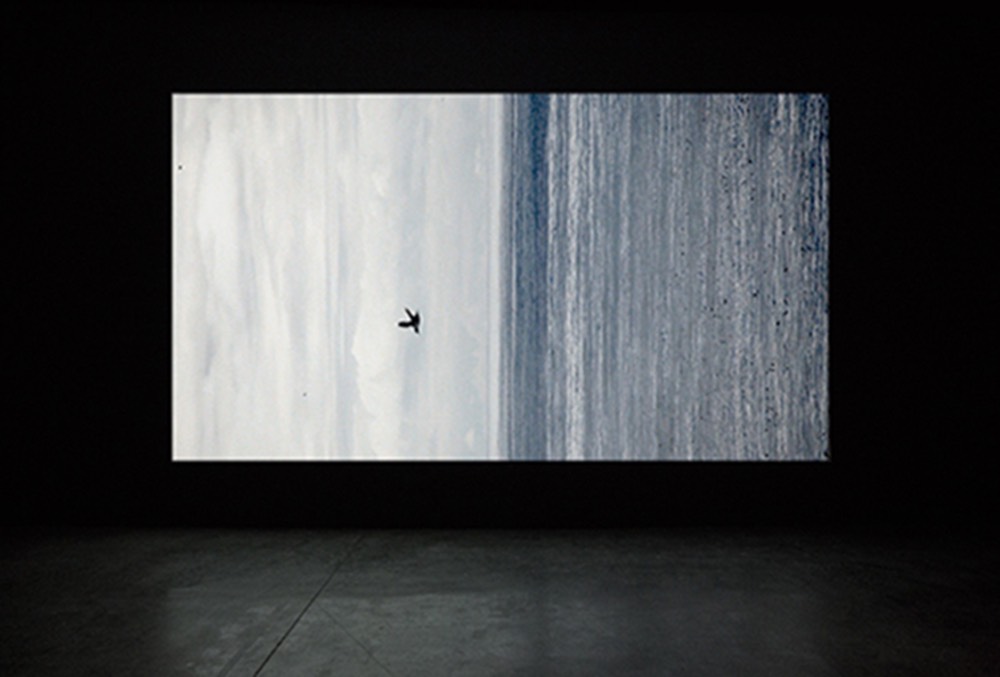
Rebeca Mendez, CircumSolar, Migration 3, Single Projected Video, 2013.
Rebeca Mendez
This architectural-scaled video projection is a contemplation on migratory sea birds captured during their breeding season at Látrabjarg, the western most point of Iceland, which is the largest bird cliff in all Europe. The spatial shift, together with a low video frame rate defamiliarizing the seascape, so the viewer may understand the migratory impetus as code; a genetic code for evolutionary preservation shared by all living organisms.
Rebeca Méndez was born in México City. She received her BFA and MFA from Art Center College of Design. Méndez’s art practice is in various media - photography, 16mm film, video, and installation - with which she explores the nature of perception and media representation, specifically how cultures express themselves through the style of nature that they produce at a given time and the medium through which they construct this nature. She considers the journey as a medium in itself and has produced a significant body of work based on travels to unfamiliar and extreme places such as Iceland, Patagonia, Svalbard archipelago in the high arctic, and the Sahara, where she is awakened to a heightened level of perception. Méndez’s work has been exhibited extensively throughout the United States and Latin America. Selected solo exhibitions include: Rebeca Méndez: At Any Given Moment at the Nevada Art Museum, Reno, Nevada (2012); Each Day at Noon: Rebeca Méndez, Café Hammer, Hammer Museum, Los Angeles (2012); Rebeca Méndez, Museum of Contemporary Art, Oaxaca, Mexico (2011); Rebeca Méndez: Selections from the Permanent Collection of Architecture and Design at the San Francisco Museum of Modern Art (1998). Méndez was the 2012 recipient of the National Design Award bestowed by The White House and the Smithsonian Cooper-Hewitt National Design Museum. Méndez was awarded the 2010 California Community Foundation Mid Career Fellowship for Visual Artist. She taught at Art Center College of Design and is currently a professor of Design Media Arts at the University of California, Los Angeles.
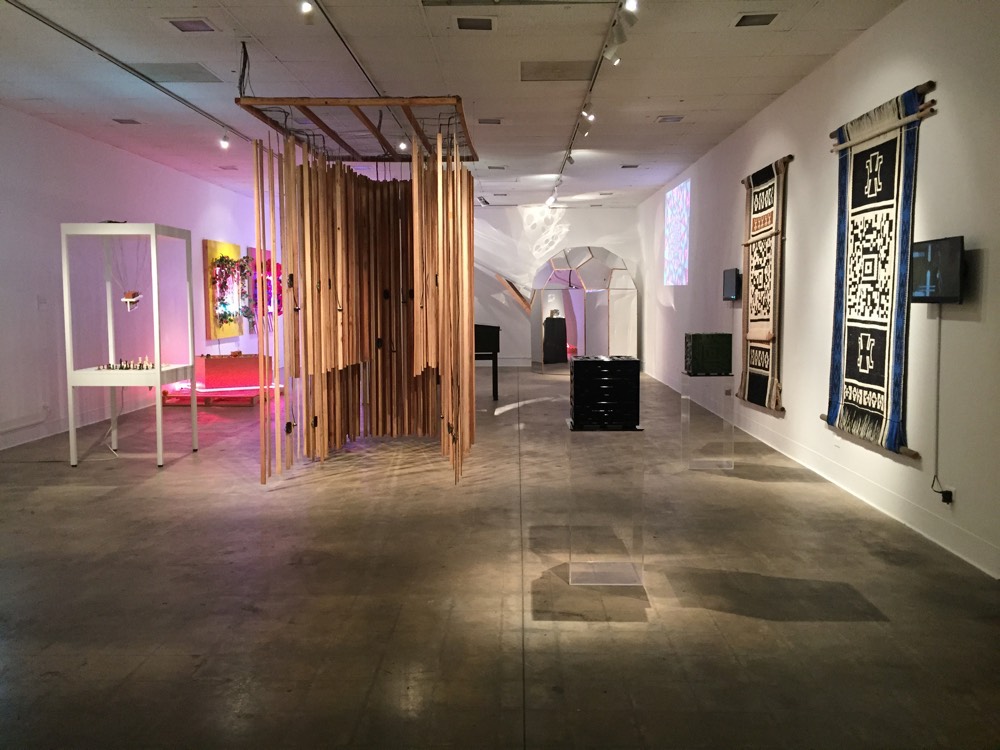
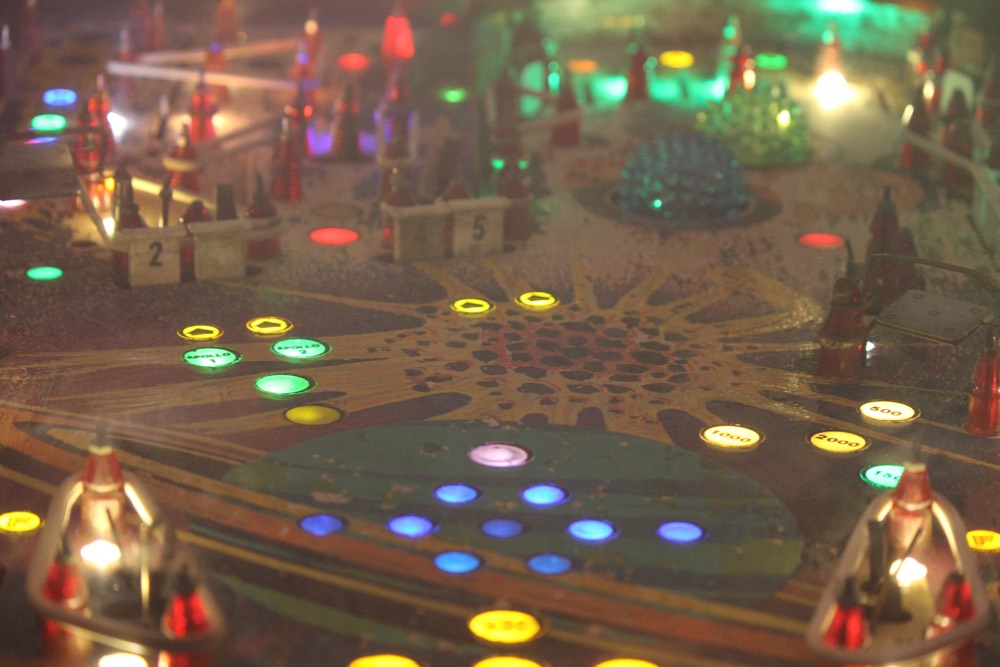

Stay Connected